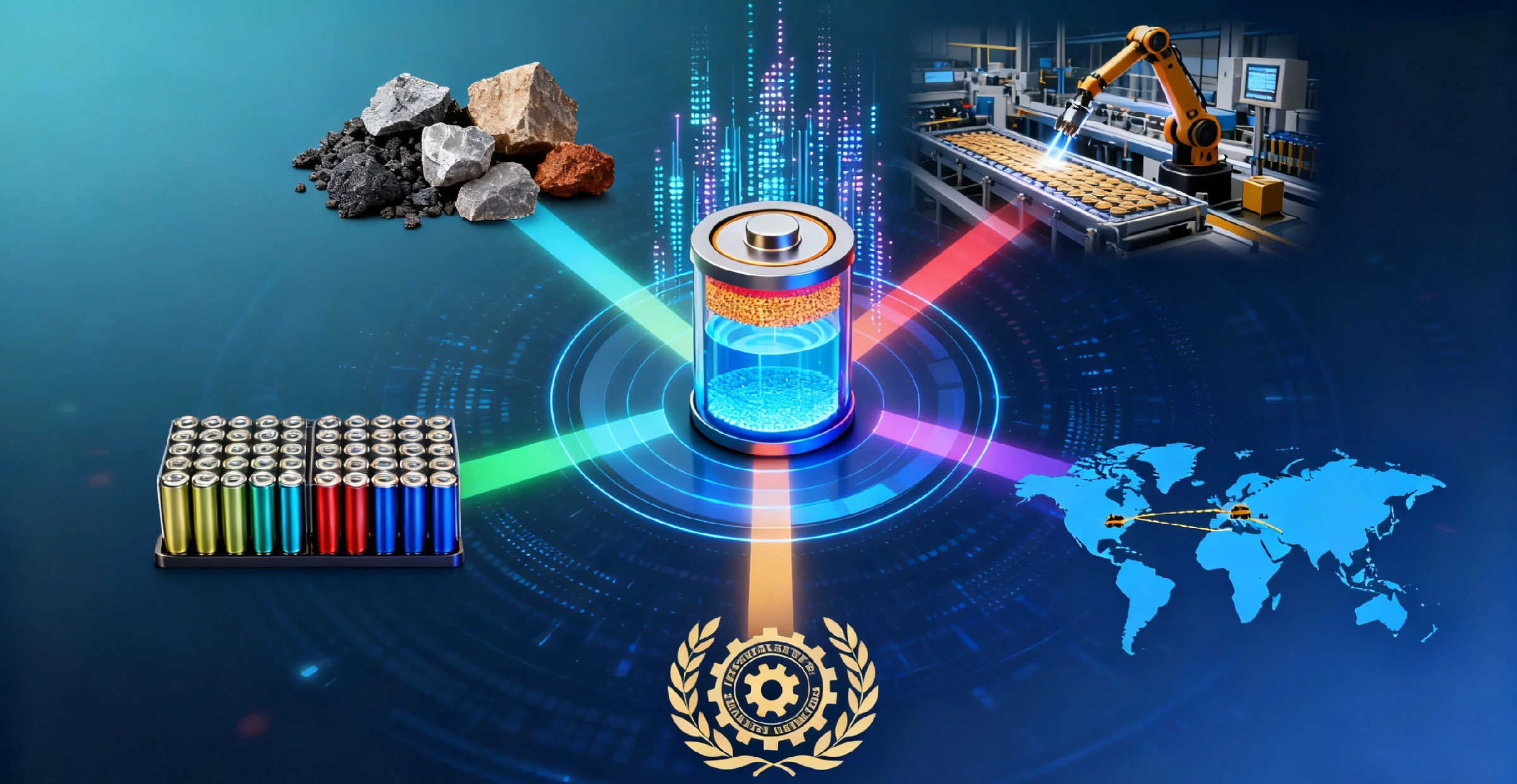5 Things That Influence Lithium Battery Costs
Whenever someone asks why lithium battery prices are so volatile, the explanation is seldom straightforward. Lithium batteries fuel everything from smartphones to electric cars (EVs) and grid-scale energy storage installations. But what lies behind the sticker price is a convoluted combination of raw material prices, technology, market forces, and even geopolitics.
If you have ever wondered what actually drives lithium battery costs, this guide breaks down the five biggest factors.
What Do We Mean by Lithium Battery Prices?
Cost of lithium battery is the expense of manufacturing and selling lithium-ion batteries, the most widely used storage technology. Cost is usually expressed in $ per kWh to ease cross-application comparison. BloombergNEF stated that in 2023 the average lithium-ion battery pack cost was around $139/kWh, varying by chemistry and scale.

Factor 1: Raw Material Costs
The first and perhaps simplest driver of lithium battery expense is raw materials. Lithium hydroxide and lithium carbonate, nickel, cobalt, and manganese are all integral to battery chemistries.
- Lithium:Supply originates primarily from Australia, Chile, and China worldwide. Prices have cycled and declined based on mining capacity and EV demand.
- Cobalt:Still used in many cathodes (though declining), largely sourced from the Democratic Republic of Congo, thereby making supply chains susceptible.
- Nickel:Increases energy density but is sensitive to market volatility.
When lithium carbonate prices reached a high in 2022 (over $80,000/ton in China), battery pack prices increased dramatically, which had an impact on EV affordability.
Factor 2: Manufacturing Technology
How effectively a factory can produce batteries is as crucial as material cost. China's gigafactories, and their counterparts in Europe and the United States, are competing to achieve economies of scale.
Unit costs come down from automation, advanced electrode coating processes, and dry processing technologies. It is shown by how large-volume production is cutting prices significantly at places like Tesla's Nevada Gigafactory or Ningde's CATL.
But here's something to think about: will improved tech make lithium batteries affordable enough for everyone? Answer: yes and no—rates may continue to drop, but material volatility still creates a basement.
Factor 3: Energy Density and Chemistry
All lithium batteries are not created equal. Chemistries like LFP (Lithium Iron Phosphate) and NMC (Nickel Manganese Cobalt) have extremely different cost structures.
LFP: Lower cost, safer, longer cycle life, but less energy density.
NMC: More energy density, widely used in EVs, but price dependent on nickel and cobalt.
For example, BYD has been marketing LFP batteries in Chinese and European EVs, lowering vehicle price while maintaining range through design optimization.
The chemistry you choose directly impacts performance as well as final pricing.
Factor 4: Market Demand and Policy
Demand is high, and it might increase the cost of lithium batteries, but this can be minimized with government incentives and policies.
EV demand: Tesla, BYD, and Volkswagen are increasing EV production, and international demand is putting pressure on the supply chain.
Grid storage: Projects in California and Germany are promoting large orders for lithium batteries, so prices rise.
Policy incentives: The U.S. tax incentives (Inflation Reduction Act) and Europe's move to facilitate domestic battery supply reduce the cost to buyers.
In short, where governments encourage clean energy transitions, the end-consumer price of lithium batteries will fall even if material prices rise.
Factor 5: Supply Chain and Geopolitics
This is typically an underestimated but very powerful factor. Lithium batteries depend on complex global supply chains. From Australian mines for lithium, to Chinese refining plants, to Korean cell assembly, each step leaves it vulnerable.
When shipping lanes get cut or trade barriers hit (as in 2020–2022), prices can skyrocket. That is why companies are investing in local supply chains. As an example, Northvolt in Sweden is building European-led production to decrease dependency on imports.
Rapid Snapshot: Lithium Battery Price Drivers
| Factor | Impact on Price | Example |
| Raw Material Costs | High volatility | Lithium carbonate spike in 2022 |
| Manufacturing Technology | Reduces cost | Tesla Gigafactory automation |
| Chemistry | Varies by type | LFP cheaper than NMC |
| Market Demand & Policy | Pushes prices up/down | EV subsidies in Europe |
| Supply Chain & Geopolitics | Adds uncertainty | Northvolt’s EU-local supply |
Thinking Ahead: Where Are Prices Headed?
Consider this question that everyone is asking: Will lithium batteries continue to fall in price?
The industry trend would have us think so—by 2030, prices tumbling below $100/kWh, making EVs as affordable as gasoline cars without subsidies. But material shortage or political shock can still throw potholes on the road.
Another question: Will solid-state batteries replace lithium and render all of this irrelevant? Solid-state appears promising, with Toyota eyeing commercial deployment in 2027, but lithium will remain the reigning champion during this decade because of cost and size considerations.
Daily Musings Over Lithium Battery Prices
Many US homeowners installing solar + storage systems wonder why battery costs vary so unpredictably. The answer often lies in chemistry—Tesla's Powerwall uses NMC, while other providers use LFP, which varies the costs.
Others in emerging economies like India wonder why prices are not falling so quickly. Local tariffs, import costs, and smaller economies of scale explain part of the disparity.
And in markets such as Europe, consumers are beginning to realize that "Made in EU" batteries may be more expensive up front but offer more stable long-term pricing because they have local supply chains.

